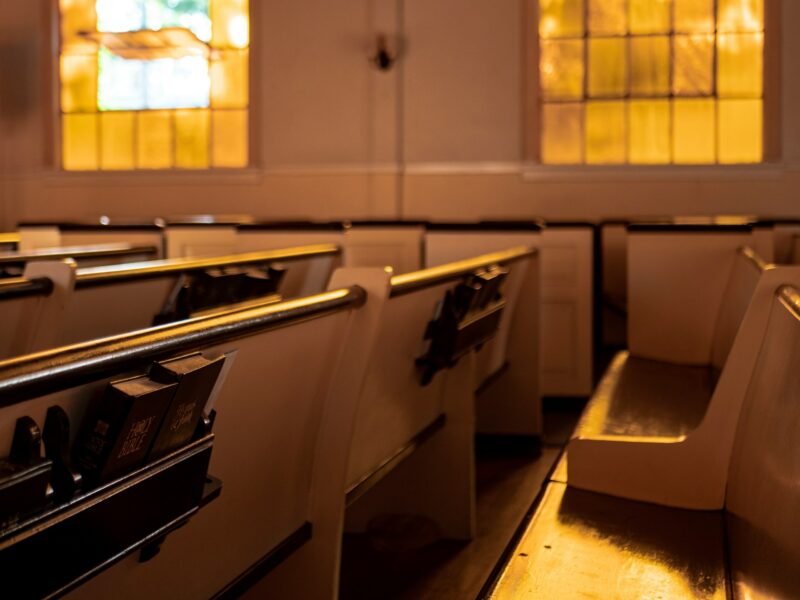What follows is speculative theology. I do not claim that it is right, only that it is possibly right.
At the transfiguration, Jesus talked with Moses and Elijah. For in the Lord’s glory is revealed the invisible presence of his saints, who stand in his presence and with whom he converses. Furthermore, Jesus said, not to them but to us, “Truly, truly, I say to you, whoever believes in me will also do the works that I do; and greater works than these will he do, because I am going to the Father” (Jn. 14:12), and we are called his body (1 Cor. 12:27). This leads to a theological principle: what Jesus does, we do in and through His doing it. If this principle is true, then we must say that we also stand atop Mt. Tabor conversing with the saints in Christ’s own voice, with and as Christ’s own tongue.
This, I argue, is the only way we can biblically understand colloquy with the saints. Any speech apart from the transfigured Christ is necromancy, for “whatever does not proceed from faith is sin” (Rm. 14:23) but “to the pure all things are pure” (Tit. 1:15).
This calls for a reimagining of the popular imagination of the intercession of the saints. We might well agree with Article 22 of the 39 Articles that some Romish medieval conceptions of the invocation of the saints are “a fond thing, vainly invented, and grounded upon no warranty of Scripture, but rather repugnant to the Word of God.” To many, the reason for calling upon the saints is because they serve as mediators unto God.1 But “there is only one mediator between God and man, the man Christ Jesus” (1 Tim. 2:5). For in this conception, the saints are not mediators to Christ, but Christ is the mediator to the saints. As Bonhoeffer famously said in The Cost of Discipleship: “[Jesus] is the Mediator, not only between God and man, but between man and man.”2 For it is only in and as the transfigured Christ that we can address the saints.
But what then of the practice of saintly intercession? Pleas for intercession and hymns of veneration are, after all, the two forms of speech permitted by Christian grammar between the holy living and the holy becoming. And indeed, proper veneration leads to pleas of intercession, if indeed the speech is mediated through Christ. For a saintly speech that stopped at veneration without intercession would either fail to return to the world of becoming, or else would turn intercession into direct petition and thus transform veneration into adoration, which is tantamount to divine hate-speech.
But how, we must ask, can we ask the saints for intercession through the lips of Christ, if indeed we do not consider them as mediators? Because Moses and Elijah, and all the faithful, ultimately do not stand outside of the Son, but are addressed through the Son because they too stand within Him in glory, as His transfigured body. When we ask the saints’ intercession, we are asking the intercession of the whole Christ. Our prayers are joined with the prayers of all the faithful people. For the realized solidarity between all of God’s people, whether on earth or in heaven, is the prayer of the Son (Jn. 17:21). Thus pleas for saintly intercession are, in fact, the partial answering of our very pleas, by nature of what Christian prayer genetically is. For all Christian prayer is Christian insofar as it harmonizes with the formula given by our Lord: “Our Father, who art in heaven…” . And, part of our Lord’s prayer is indeed that it would be “on earth as it is in heaven.” Thus every ora pro nobis, every plea for saintly intercession is a partial fulfillment of the telos of prayer itself: the restoration of the cosmos as God intends it to be and “through [Christ] to reconcile to himself all things, whether on earth or in heaven, making peace by the blood of his cross” (Col. 1:20)
And this, again, is why it is important that it is through the transfigured Christ that we pray. For in the transfiguration of Christ upon Mt. Tabor we see the first-fruits of the transfiguration of the world, where “God will be all in all.” It is through this first-fruits of transfiguration that we pursue the transfiguration of the entire earth by joining it to heaven—and this happens partly through the intercession of the saints.
1. See for instance Thomas Aquinas, Summa III. 26.1: http://www.newadvent.org/summa/4026.htm
2. Dietrich Bonhoeffer, The Cost of Discipleship: Anniversary Edition (London: SCM Press, 1959), 49.







'A Reformed Litany of the Saints: An Anglo-Catholic Speculative Rebuttal' have 2 comments
November 3, 2019 @ 9:42 am Christian
I absolutely love this website!
February 20, 2023 @ 4:42 pm John Politis
Please add me to your mailing list.